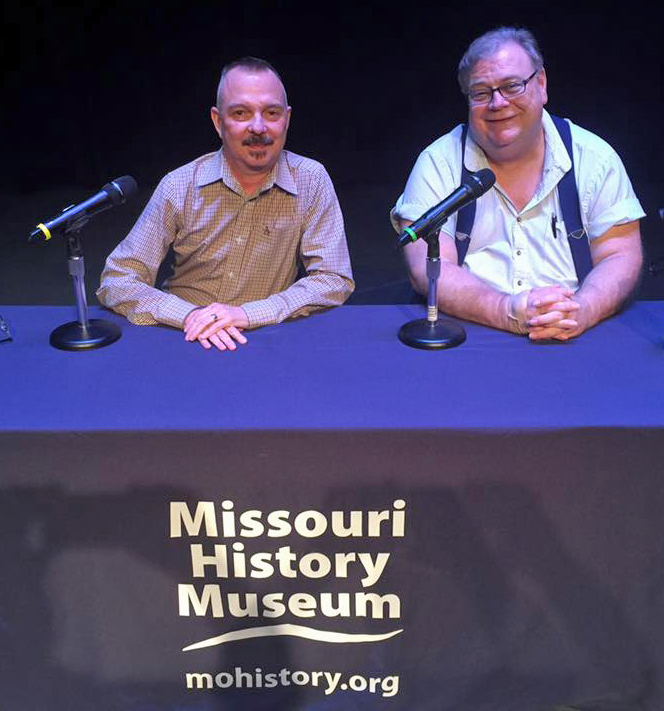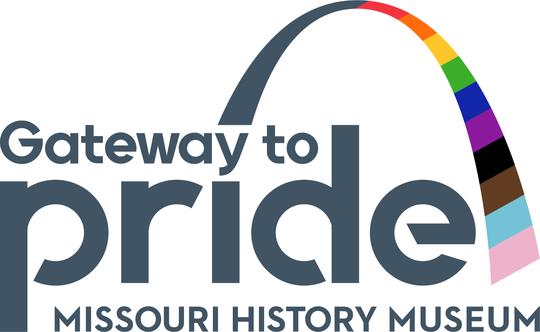Chuck Charleston
 By James Hawkins
By James Hawkins
October 15, 2016: As Sophia Petrillo would say, “Picture This” 1970 East St. Louis, two young fellas open a gay bar two years earlier. The place grew from nothing into a successful business. It had all the amenities a gay bar needed at that time - a top of the line drag show and go go boys dancing on the bar (sometimes naked). A small dance floor was actually the biggest draw.
They were always looking for new avenues of entertainment to keep their small business on top. There was a young man who came to work at this establishment, he tended bar, worked security, did ad layouts, and whatever was needed to keep this bar called The Red Bull a success. This was Charles Robert Welsh Jr. One weekend they hired a Spinner which was very popular in Black nightclubs at that time.
Their equipment consisted of two turn tables a couple of speakers and a mike. The Spinner would some how mixed the music being played while adding different beats which only added to the enthusiasm to the people dancing. Charles became infatuated with this new concept of entertainment.
The Spinner instructed Charles how this system worked. History was now in the making. Charles became the in house Spinner always adding new innovations and equipment to this new form of entertainment which in turn started the business to grow beyond it's wildest expectations. They opened three places in St. Louis, and had to open a second Red Bull to accommodate the growing crowd of new customers.
There seem to be no end to this growing business finally the decision was made to open a massive complex that was Faces Nightclub. So much of the credit and hard work goes to my friend Charles or as you may know him, Chuck Charleston. Thank you.
Chuck died on April 21, 1988 and is remembered in our community for his involvement—both public and private—in many causes and charities. He worked with many among us, lending his support and resources to numerous local events, and often doing so quietly behind the scenes, receiving little credit. He won two Billboard Magazine "Best Regional DJ" awards.
In June 1988, Pride St. Louis created the Chuck Charleston Award to acknowledge individuals who, in the example of its namesake, demonstrate significant involvement and service promoting LGBT pride in our community. The Chuck Charleston Award is now presented to a former or current member of Pride St. Louis, Inc. who demonstrates these qualities.
A Look at a Black Lesbian Community in 1960s St. Louis: Ethel Sawyer’s Pioneering Sociological Research

October 9, 2016: In 1965, Washington University graduate student Ethel Sawyer completed work on an essay titled “A Study of a Public Lesbian Community.”
Based on fieldwork that she conducted in St. Louis, Sawyer’s essay is the earliest known sociological study of a Black lesbian community anywhere in the United States.
Sawyer was born in Mississippi and graduated from Tougaloo College, where she became involved in civil rights activism. In 1961, she and other members of the "Tougaloo Nine" were jailed after holding a "read-in” at a segregated public library in Jackson, Mississippi. Sawyer came to St. Louis to pursue graduate study in the cutting-edge sociology department at Washington University.
Although heterosexually identified herself, Sawyer chose to focus on homosexuality. At this time this was still a taboo topic for social science research.
After meeting her initial contact outside of the Pruitt-Igoe housing projects, Sawyer befriended a group of African-American lesbians who lived in North St. Louis. Sawyer spent time with them at a bar they frequented and she interviewed them about their lives, identities, and relationships.
Sawyer’s serious and sympathetic study broke new ground in sociology, and today it serves as an invaluable window on the Black lesbian experience in 1960s St. Louis.
Image source: elsiechenier.com
A Very Personal Reflection

By Dan White
October 8, 2016: Who's the fork? Thank You for gathering us to discuss this important film “A Very Natural Thing”. This was the first mainstream film to feature a gay love story! People (even gays) had never seen a gay relationship on the big screen of the neighborhood movie theater!
As the LGBT's began to become a tribe we needed definition. This was one of the reasons this film is so very important.
I was there at the screening in question. On that day in the mid seventies, in the Maplewood theater a very important epiphany hit me. Allow me to explain.
I'll skip the lecture of physiologic and psychological effects that happen while watching a movie in a theater in the company of hundreds.
I had graduated from college and was trying to get a toe hold in my career but more importantly I was finding the company of others like me.
I have a vivid memory of a scene in this film. The two had been apart and were rejoining for dinner served in the living room. Neither were very hungry. They were too excited to just be back together. They stood up, embraced and softly kissed.
For the first time in my life I KNEW what that felt like! For almost a quarter of a century I had been forced to “interpret” the love scenes, to guess what a big screen kiss felt like. Imagine myself as the heroine being swept up into his arms as the music swelled.
No THIS I knew! I had felt it. I knew the electricity, the feel of lips, the comfort of embrace. This WAS ME!
I remember thinking: so this is what everybody else feels watching a movie kiss! No wonder there are so many! This revelation went deeper, it showed me being “gay” was more than what brought sexual climax! There was more to it. More to me! I was part of a “tribe” a “people”...and we are different!
Perhaps the second most important realization to hit young LGBT's is when we find we are not alone!
Many people point to the Stonewall riots in June of 1969 as a time when the homosexuals came together as a people. I point to the drag queen arrests on Halloween here in St. Louis that year. When the brave people from a group called the Mandrake Society formed a phone tree and urged their members to leave the safety of being hidden and come to the aid of other homosexuals. It was historically the right time for a people to come together as a group.
For 600 years western culture had done its best to hide all mention of homosexuality, to erase any of their contributions and to paint them as monsters.
I refer you to the monumental work of Vito Russo: “The Celluloid Closet” for descriptions of how homosexuals had to die in every film.
Here was a movie, perhaps the first in this culture to show a homosexual love story. It was not a sex film loop that could be watched in a dirty, smelly booth down on Grand and Gravois.
With a working title of (For As Long As Possible): “A Very Natural Thing” helped to portray as well as to define just what our relationships are all about. It stands not only as a history of life in the seventies (scenes filmed inside the Club Baths, or at the Pines of Fire Island). It promises us we can define just how we relate and form bonds outside of the hetero-normitive formula. All to often our view of a relationship today is still based on a heterosexual marriage. We don't have to be either a fork or a spoon!
In this effort, it is as fresh and challenging today as that day in the mid seventies when a slightly uncomfortable young man, surrounded by others like him, watched two men kiss on the big screen. It reminds us that we don't have to become “purple-painted straight people!”
Remarks given by Dan White at the St. Louis LGBT History Project and Missouri History Museum's second annual LGBT History Month event held on October 6, 2016. At the event, the film A Very Natural Thing (1974) was screened. In May 1977, the St. Louis Task Force for Human Rights held a fundraiser screening of the movie, that was among the first mainstream movies centered around a postive gay relationship. Held at the Maplewood Theatre, the fundraiser raised an impressive $1,000 to help fight Anita Bryant's anti-gay crusade. At the Missouri History Museum, Rick Garcia who helped organized the 1977 event, and Dan White who attended, spoke about St. Louis' LGBT activism in the 1970s.
Photo: Rick Garcia (left), Dan White (right)
Mapping LGBTQ St. Louis

By Miranda Rectenwald
October 3, 2016: As LGBT History Month begins, here is an overview of a new way St. Louis is tracking its local LGBTQ history. Mapping LGBTQ St. Louis is an interdisciplinary humanities project that centers on the LGBTQ experience with the divided city. Between spring 2016 – spring 2017 students, researchers, faculty, archivists, librarians, and interested people from the St. Louis-area are gathering historical information about places connected to people in the queer* community from 1945 – 1992. Then the information will be organized and the mapping tools of GIS used to show addresses and sites on a digital map (think google maps – but with history). The initial set of data and public interface is anticipated to debut in March 2017.
This project began with a 2016 grant proposal by librarian Makiba Foster and faculty member Andrea Friedman, Associate Professor of History and Women, Gender, Sexuality Studies, as part of the Center for the Humanities Divided Cities Initiative. Community partners also include the Missouri History Museum and the St. Louis LGBT History Project. The project follows in the footsteps of similar projects, such as the ONE Archive’s California Pride and Globaltraqs.
The original grant proposal included the following description: Through an examination of queer uses of space within the built environment, we will explore how sexuality divides cities and how urban spaces are implicated in the division of queer communities around race, gender, and class. Using GIS mapping to visual document these sites of transgression in historical time and space, the project will identify patters of sexual segregation, analyze how these reflect, reinforce and reproduce other axes of division, and ask what we can learn about the possibilities of resistance in the urban landscape. The final product – an interactive map available to the public via a digital portal – will allow a board audience access to the social uses of space in postwar (1945 – 1992) St. Louis, using artifacts and archival materials as well as information about historical context to bring alive the experience of living in a city divided by sexual identity and practice, gender, race, and socioeconomic status.
Project organizers include: From Washington University: Andrea Friedman, Associate Professor of History and WGSS; Makiba Foster, research consultant (former Curator of Oral History and WGSS Librarian); Aaron Addison, Director of Scholarly Services WU Libraries; Jennifer Moore, GIS & Data Projects Manager and Anthropology Librarian; Bob Hansman, Associate Professor School of Architecture; Miranda Rectenwald, Curator of Local History. From Community Partner organizations: Sharon Smith, Curator of Civic and Personal Identity, Missouri History Museum; Chris Gordon, Director of Library & Collections, Missouri History Museum; Steven Brawley, St. Louis LGBT History Project; Ian Darnell, Ph.D candidate University of IL, Chicago.
This summer (2016) the project focused on locations of social interaction such as hang-outs, bars, taverns, clubs, and other gathering sites in the city and county of St. Louis, plus eastern metropolitan areas in Illinois.
Keep up with the project via this blog.
Story adapted from July 5, 2016 blog post.
Image coutesy of St. Louis LGBT History Project.





